SAAB 32 Lansen
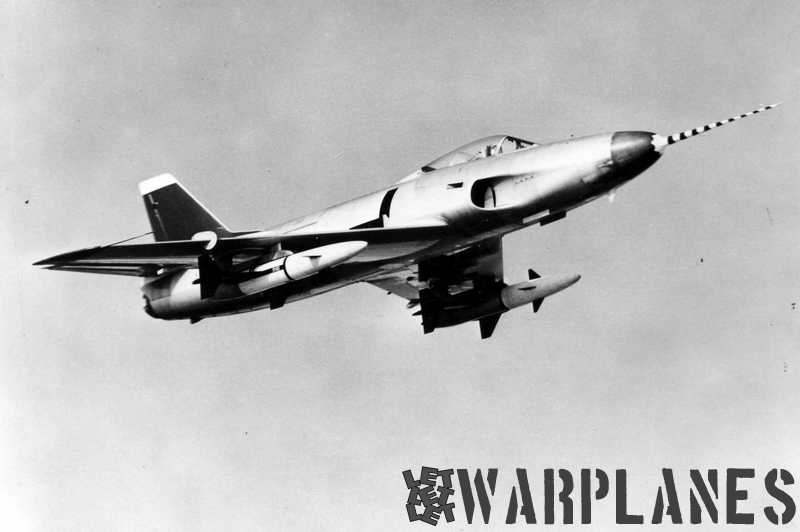
Introduction:
Sweden’s aircraft industry produced during and after the war a series of operational military aircraft to defend its neutrality. It produced types like the SAAB B18 medium bomber and the twin boom pusher fighter that saw service both as a piston engine and as jet engine powered version. Another masterpiece of the SAAB works in the fifties was the J29 Tunnan swept wing jet fighter that clear showed that Swedish designed warplanes had to be regarded as one of the best in the world. The Tunnan had a very distinguished career, but it was soon evident Sweden also needed a heavier and faster jet-plane with a longer range to defend not only its borders effectively against intruders but could mainly be used as an attack plane and for photo reconnaissance missions.
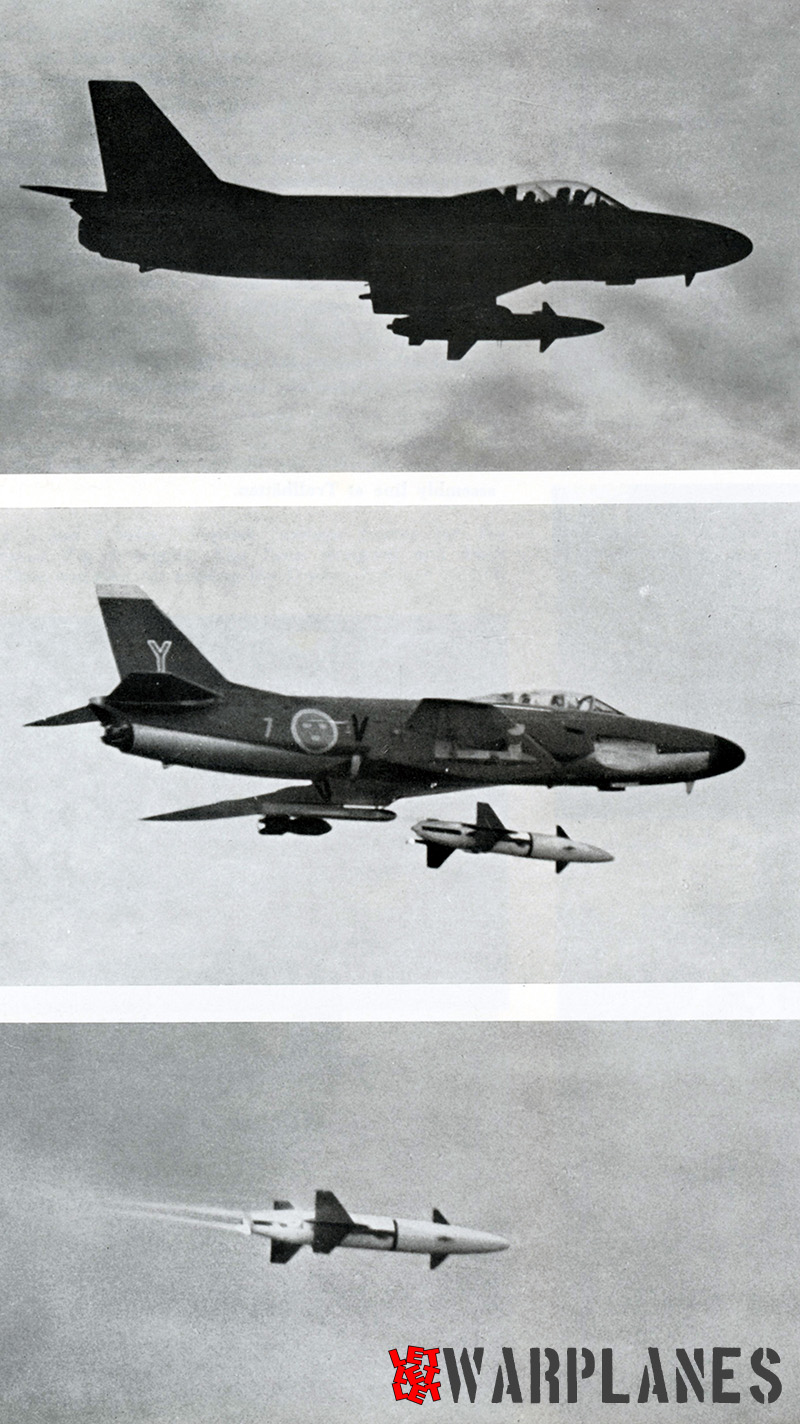
The Lansen is born:
The development of the Lansen was started in December 1948 as Project no.1150 or ‘Aircraft 32’ under the leadership of SAAB’s project manager Arthur Bråsjö.
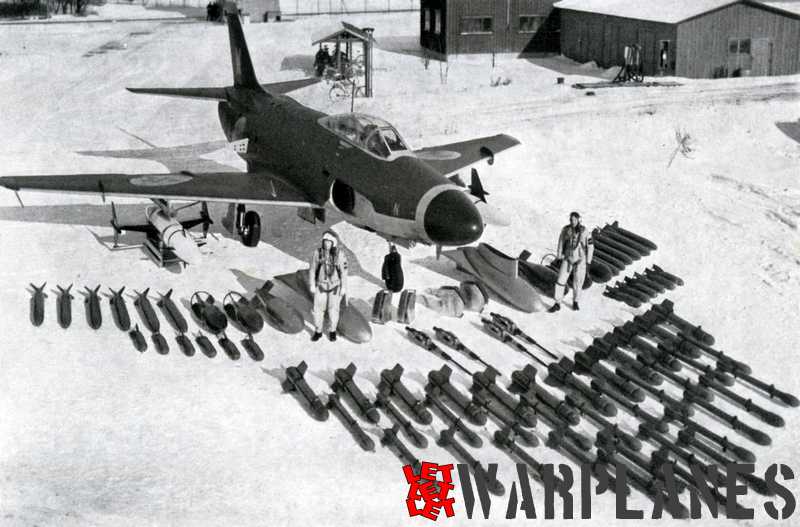
Swedish Air Force requirements for the P1150 were demanding: the aircraft had to be able to attack anywhere along Sweden’s 2000 km (1245 miles ) of coastline within one hour of launch from a central location. It had to be capable of operating in any weather, day or night. Special attention was to be paid to integrating the electronics and weapons systems to create the equivalent of today’s weapons systems approach to combat aircraft design. The aircraft was to be armed with four 20 mm cannons, rockets, bombs and/or guided air-to-ground missiles.
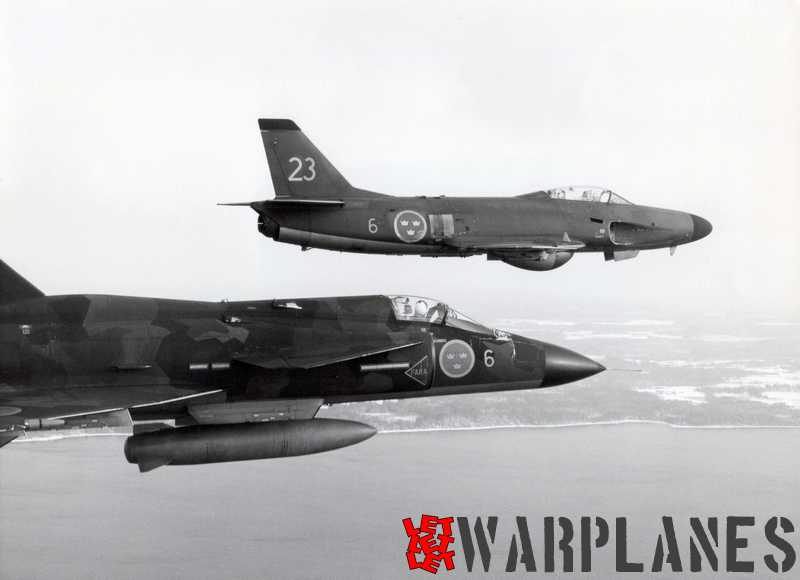
The design team created a sleek airframe with clean lines powered by a Svenska Flygmotor RM 6, a license-built Rolls-Royce Avon Series 100. Uniquely, the design of the swept wings was the result of an early application of computer technology. To test the 35° sweepback design, a half-scale wing was fitted on a Saab Safir, the Saab 202.
Flight testing and production
A small batch of four P1150 prototypes were constructed, designated as ‘aircraft 32-1’ to ‘aircraft 32-4’. Although the new fighter was designed form the start as a two-seater, the four prototypes only had a single seat. Aircraft 32-1 made its first flight on 3 November 1952. flown by SAAB chief test pilot Bengt Orlow. Some minor problems appeared at the first flight testing, but these could all be adequately solved and although the aircraft was not designed for higher speeds than Mach 0.9 the first prototype easily exceeded one year later the speed of sound in a shallow dive! One of the four prototypes was lost in a crash but the other three successfully completed their testing program. They were used until 1960 for various test programs.
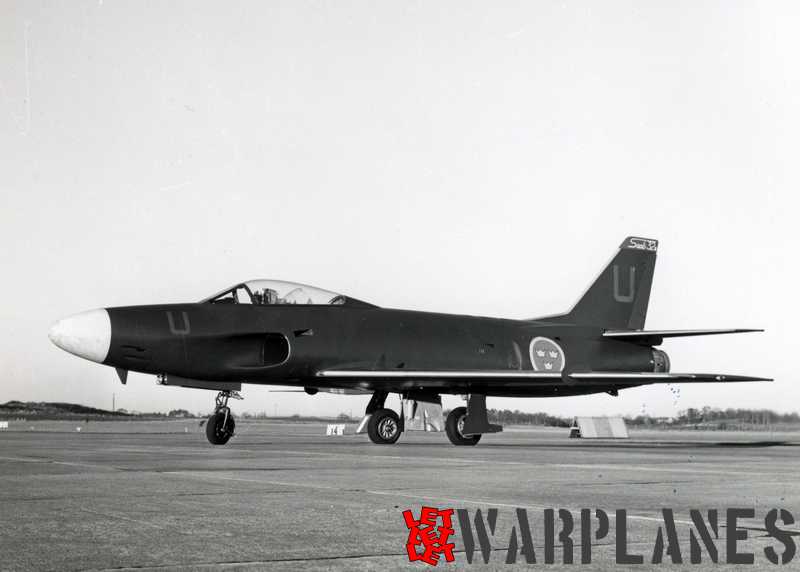
The Swedish government placed a production order for the A32A attack plane and production was started in November 1955. It was produced until June 1957 and over this period a total of 284 were delivered. The original order was for 300, but one was lost in an accident before delivery and 15 were converted into the S 32C reconnaissance plane.
Although there were no trainer versions, some Lansens had rudimentary controls fitted in the rear seat.
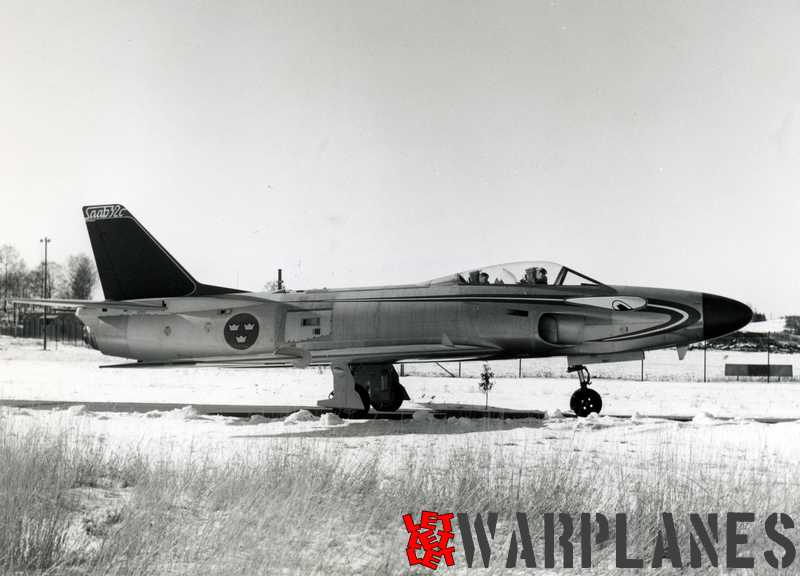
The A32A was typically intended as an attack plane to prevent an attack across Sweden’s coastlines. Although strictly neutral in the Cold War Sweden feared such an attack in particular from the Soviet side. The Lansen was at some stage planned for possible delivery of nuclear or chemical warheads and between 1950 and 1960 Sweden even had an active nuclear weapons program. However, all activities on this were finally terminated in an early phase.
The A32 attack plane was not the end of the Lansen development. It was further developed as the J32B into an all-weather fighter that could operate under 24 hours conditions. It had a radar installation in a nose radome with a much larger reach than the French CSF radar of the A32A attack version. The first J32B prototype was converted from the second production A 32A and made its first flight on 7 January 1957. It was followed by a second prototype.
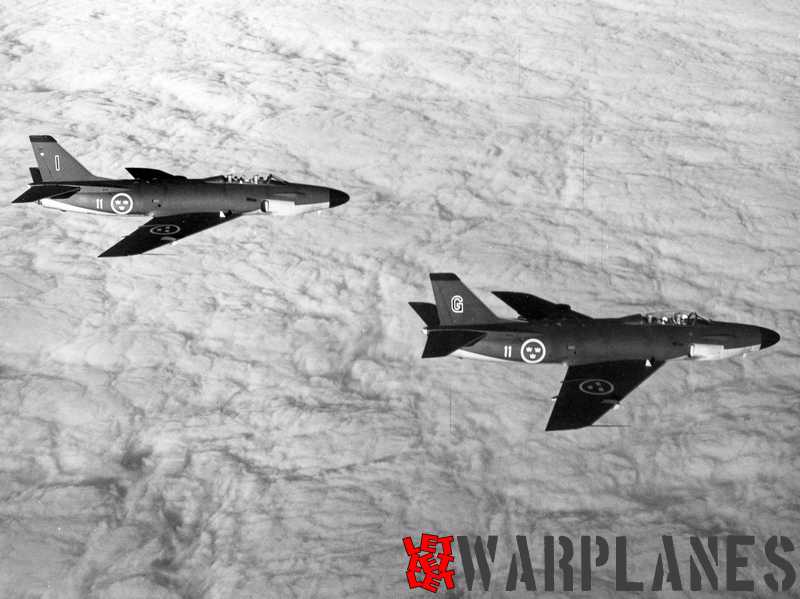
Final orders from the Swedish government were for 118 production machines. Except for an armament of four 30 mm guns in the nose, it was also fitted with four Sidewinder air-to-air missiles under the wings. It had a more powerful engine fitted with a longer Swedish developed afterburner. Because of its better performances, the pilots flying it called it the Lansen-Sport!
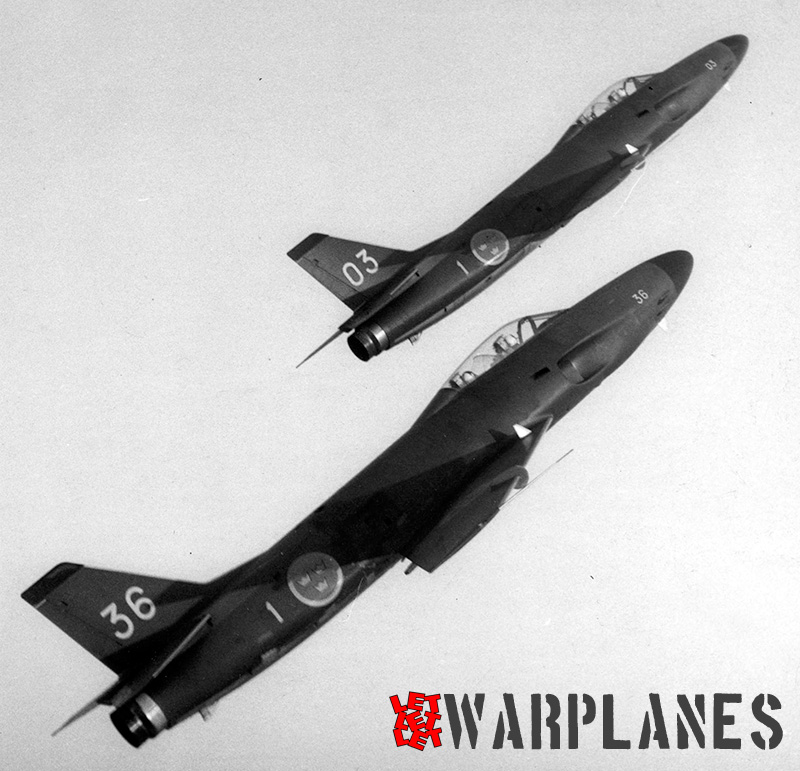
A further variant was a specialized photo-reconnaissance version as S32C. With its camera equipment it could fly low level recce-missions as low as 12-15 m! The prototype, converted from an A32A, made its first flight in March 1957. It could carry six cameras in the nose and carried no armament. In total 45 machines of this version were built.
Other conversions from existing airframes were:
-J32D Target tug version. Six J 32B were modified, retired in 1997.
-J32E ECM (electronic warfare / electronic countermeasures) version used also for ECM training. Fourteen J32B were modified, The were retired in 1997.The J32E was equipped with jamming system G 24 in one of three versions (for L, S or C bands) used for jamming ground and naval radars. Additionally Adrian (for S and C bands) and Petrus (for X band) pods were used for jamming aerial radars.
One A32A was converted for electronic trials of the Viggen radar system with a modified noise resembling that of the Viggen.
Versions never built were the J32AD for a lighter day fighter version without the A32A radar and the J32U, that was a more developed J 32 fighter version with a more powerful engine, a butterfly type tail and an improved wing design.
Operational history:
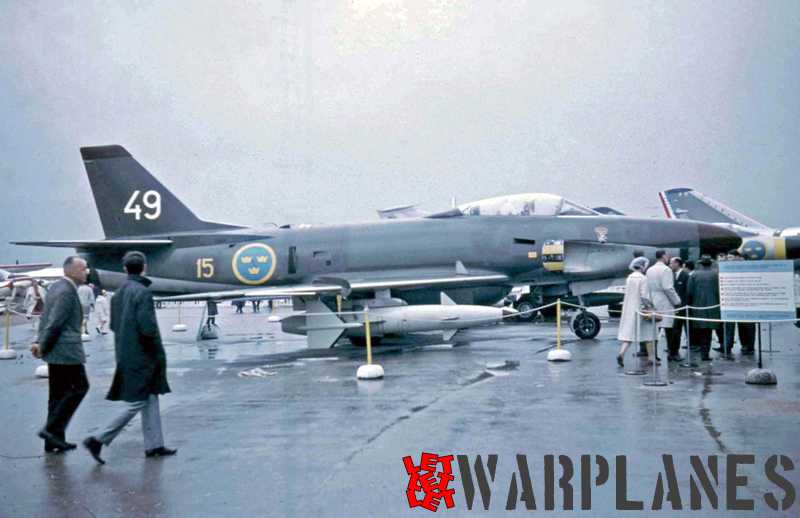
It was shown in 1965 at the Paris Air Show at Le Bourget and most likely the missiles were specially mated with the photo plane for this occasion! This S 32C was from F 15 squadron based at Söderhamn. (Photo: Nico Braas)
The Lansen had a quite undistinguished career in all its versions that were operational. It was in service at 13 Swedish air force squadrons. It was found to be very pleasant and easy to fly, could be easily maintained and showed an excellent all-over reliability. They never performed any armed missions against enemy forces and they were only used in Sweden. Although there was some interest in the fifties from several countries, these countries selected other types and the Lansen was never exported. It was gradually replaced by more modern types like the Draken and the Viggen. but it operated many years alongside these new types! The last Lansens were withdrawn from service in the late nineties.
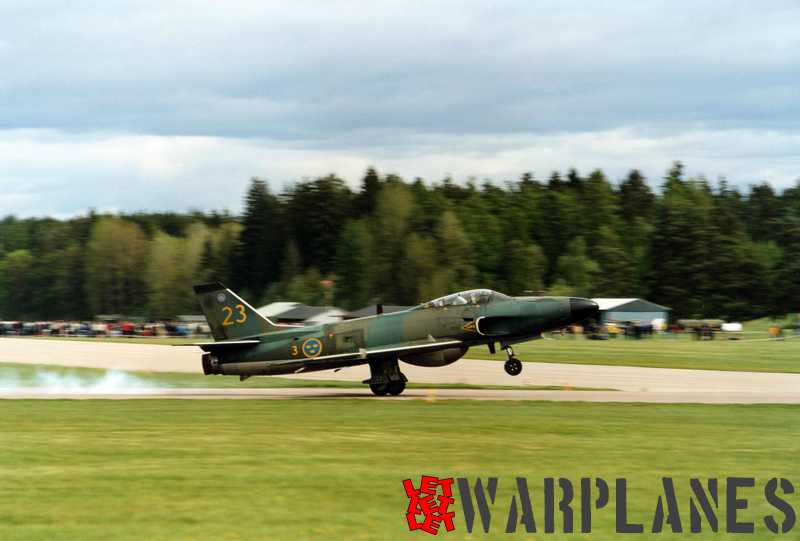
One operational A32A was swapped in 1986 with Cranfield in the U.K. for a De Havilland Dove. Although it carried the civil registration G-BMSG it was never flown in the U.K.
Two still remain operational with the sole task of taking high altitude air samples for research purposes in collaboration with the Swedish Radiation Safety Authority. One of those has been used to collect volcanic ash samples in April and May 2010.
The Lansen was in use at the following operational squadrons:
F 1 Hässlö; F 3 Malmslätt; F 4 Frösön; F 6 Karlsborg; F 7 Såtenäs; F 11 Nyköping; F 12 Kalmar; F 13 Norrköping; F 14 Halmstad; F 15 Söderhamn; F 16 Uppsala; F 17 Kallinge and F 21 Luleå.
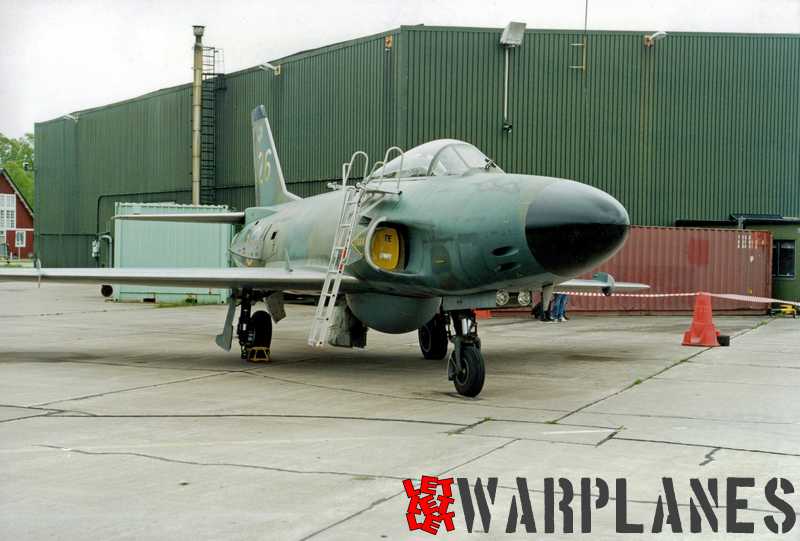
Technical data (J32B)
Powerplant: 1 × Svenska Flygmotor RM 6A afterburning turbojet of 2172 kg thrust
Dimensions:
-Length: 14.94 m
-Wingspan: 13.0 m
-Height: 4.65 m
–Wing surface: 37.4 m²
Weights:
-Empty weight: 7500 kg
-Max takeoff weight: 13,500 kg
Performances:
-Maximum speed: 1200 km/h
-Range: 2000 km
-Service ceiling: 15,000 m
-Rate of climb: 100 m/sec.
Armament: 4 × 30 mm Aden cannons with 90 rounds each; 4 × Rb 24 (Sidewinder) air-to-air missiles; 4 × 75 mm air to air rocket pods
Crew: 2
Production:
P1105 prototypes : 4
A32A 284
J32B prototypes 2
J32B production versions 118
S32C 45
Total: 453
Nico Braas
References:
-Forsgren, Jan. “Database:SAAB 32 Lansen”. Aeroplane Monthly, November 2010, Vol 38 No. 11, Issue 451. pp. 64–74.
-Anonymous, The SAAB Scania story, Streiffert & Co., Sweden 1987
-Anonymous, SAAB Sonics, no. 23/Dec 1955 – no.29 1961
Photographs: Letletlet-warplanes collection unless stated otherwise























